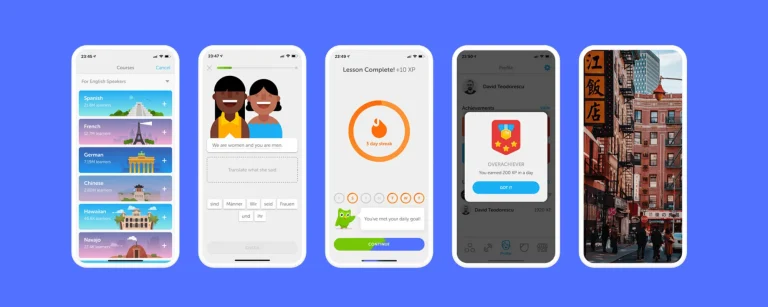As the world is going digital—with websites and applications being part of everyday life—the design for accessibility is no longer a best practice but a requirement. Accessible UI/UX design means that all users, regardless of ability, can make use of your product without any kind of barrier. This includes people who have visual, auditory, cognitive, or motor impairments, and it also includes the users of assistive technologies such as screen readers. By putting accessibility at the forefront, you are not only being more inclusive but also expanding your outreach.
Accessibility In UI/UX Design
In UI/UX design, accessibility refers to providing both user interface and user experience available to as many users as possible, regardless of their different abilities or any other form of disability. This requires the consideration of a huge number of aspects, spanning from the visual and auditory design to the very simplicity of navigation and even interaction. The objective is to eliminate barriers that may impede or limit users’ access to content or the performance of certain actions.

Importance Of Accessible Design
There are several reasons why accessible design is important:
- Legal Compliance: Accessible products are legally and socially challenged by legislation related to accessibility. For instance, in the United States, there is the Americans with Disabilities Act, while in Australia, a DDA exists.
- Inclusive User Experience: You design for all people, irrespective of their abilities, all within one product. This builds inclusion and shows social responsibility.
- Increased Usability: Very often, the accessible design also improves general usability. For example, captions on videos may help not only those with hearing challenges but also others who are in noisy environments.
- Broader Reach: Making one’s product accessible opens it to millions of people with disabilities across the world.
Core Principles In Accessible UI/UX Design
Several core principles should be taken into consideration in the effort to create accessible designs. These include, among others:
Perceivability
- Text Alternatives: Provide text alternatives for nontextual content, such as images, videos, and icons. This allows the screen readers to convey the information to users who have visual impairments.
- Color Contrast: Text and background color should have enough contrast to easily read the text for low vision or color-blind visitors. You can check for this with the WCAG Contrast Checker.
- Scalable: Users are able to scale text up to 200% without losing any content or value. It’s a very essential underlying fact that needs to be considered for users with impairments.
Operability
- Keyboard Navigation: Users with motor disabilities often rely on keyboards or other assistive technologies and not a mouse to navigate an interface. Design your interface fully using a keyboard.
- Accessible Forms: Ensure that forms are easy to navigate and that labels are clearly associated with their corresponding input fields. Use of placeholder text should be supplementary, not as a stand-in for labels.
- Time Limits: Do not impose time limits on interactions, or at the very least, allow time limits to be extended or turned off, as sometimes more time is needed by users experiencing either cognitive or motor problems.
Understandability
- Plain Language: Write in clear, concise language, using as simple grammatical structures as possible and avoiding verbose sentences. It should be easily readable and understandable by all levels of cognitive grouping.
- Consistent Navigation: Keep your navigation consistent. It means that it should be easy for users to predict where they could land should they click on some link or button.
- Identification and Recovery from Errors: Clearly identify errors in forms or interactions and suggest how the error can be corrected. For example, when a user inputs the wrong email format, show a message that explains how to fix it clearly.
Robustness
- Assistive Technology Compatibility: Make your content compatible with most of the available assistive technologies through the use of semantic HTML, ARIA landmarks, and other best practices.
- Responsive Design: Design your interface to be responsive across different devices and screen sizes. This helps all users who need to zoom in or have large text set on their devices.
How To Make An Accessible Design?
The development of an accessible UI/UX design is a practice that needs to be incorporated from the design and development phase. Here is the way to execute the same:
- Add Accessibility in the Design Process
Accessibility shouldn’t be something you think of afterward. Make it part of the design process from square one. That means accessibility considerations are within your brief, your wireframes, and your prototypes.
- Do User Testing on Diverse Participants
It is part and parcel of the design process, including users with various disabilities to ensure that all problems related to accessibility are detected that a designer may not think about. Automated and manual accessibility testing may be useful.
- Accessibility Tools
You have many tools that can assist in checking, and increasing the accessibility of your designs. Some of these tools include WAVE, Axe, and Lighthouse, which all have the ability to scan your website or application automatically.
- Stay up-to-date with Accessibility Standards
Keep you current on the latest standards in accessibility, such as the Web Content Accessibility Guidelines, defining ways in which digital content can be made more accessible.
- Educate Your Team
Everyone involved in the design and development process should know how important accessibility is. This can be achieved via periodic trainings and awareness sessions to keep the focus on accessibility.
Conclusion
Breaking the barriers for accessible UI/UX design is not a question of compliance; it’s how one allows people, regardless of ability, to use your digital products. Application of accessible design principles and best practices in everyday work gives you a chance to bring in an inclusive experience for the benefit of all users. By doing so, you will contribute to a more fair digital world and set your brand apart as an accessibility leader.







